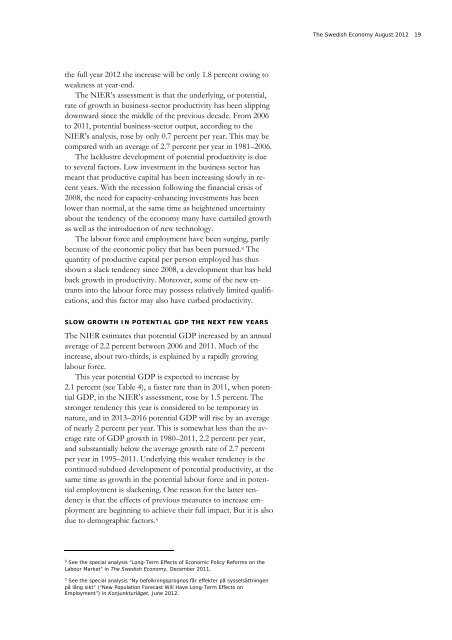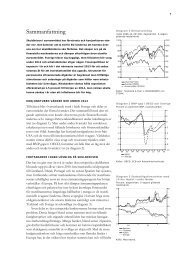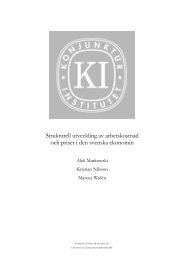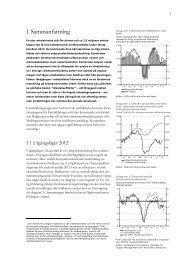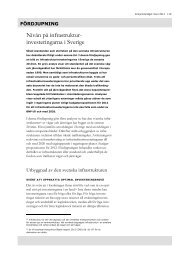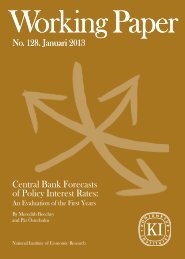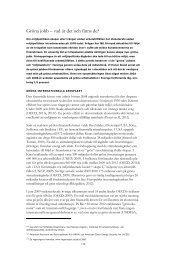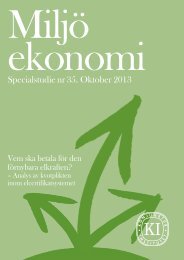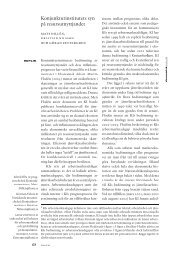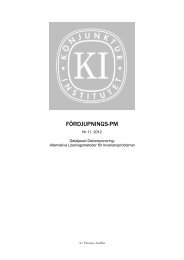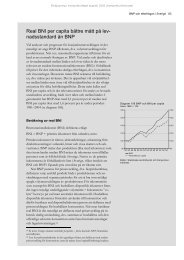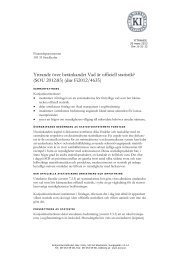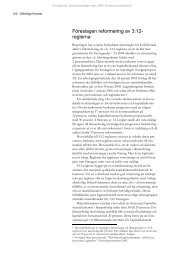Create successful ePaper yourself
Turn your PDF publications into a flip-book with our unique Google optimized e-Paper software.
<strong>The</strong> <strong>Swedish</strong> <strong>Economy</strong> <strong>August</strong> <strong>2012</strong> 19the full year <strong>2012</strong> the increase will be only 1.8 percent owing toweakness at year-end.<strong>The</strong> NIER’s assessment is that the underlying, or potential,rate of growth in business-sector productivity has been slippingdownward since the middle of the previous decade. From 2006to 2011, potential business-sector output, according to theNIER’s analysis, rose by only 0.7 percent per year. This may becompared with an average of 2.7 percent per year in 1981–2006.<strong>The</strong> lacklustre development of potential productivity is dueto several factors. Low investment in the business sector hasmeant that productive capital has been increasing slowly in recentyears. With the recession following the financial crisis of2008, the need for capacity-enhancing investments has beenlower than normal, at the same time as heightened uncertaintyabout the tendency of the economy many have curtailed growthas well as the introduction of new technology.<strong>The</strong> labour force and employment have been surging, partlybecause of the economic policy that has been pursued. 8 <strong>The</strong>quantity of productive capital per person employed has thusshown a slack tendency since 2008, a development that has heldback growth in productivity. Moreover, some of the new entrantsinto the labour force may possess relatively limited qualifications,and this factor may also have curbed productivity.SLOW GROWTH IN POTENTIAL GDP THE NEXT FEW YEARS<strong>The</strong> NIER estimates that potential GDP increased by an annualaverage of 2.2 percent between 2006 and 2011. Much of theincrease, about two-thirds, is explained by a rapidly growinglabour force.This year potential GDP is expected to increase by2.1 percent (see Table 4), a faster rate than in 2011, when potentialGDP, in the NIER’s assessment, rose by 1.5 percent. <strong>The</strong>stronger tendency this year is considered to be temporary innature, and in 2013–2016 potential GDP will rise by an averageof nearly 2 percent per year. This is somewhat less than the averagerate of GDP growth in 1980–2011, 2.2 percent per year,and substantially below the average growth rate of 2.7 percentper year in 1995–2011. Underlying this weaker tendency is thecontinued subdued development of potential productivity, at thesame time as growth in the potential labour force and in potentialemployment is slackening. One reason for the latter tendencyis that the effects of previous measures to increase employmentare beginning to achieve their full impact. But it is alsodue to demographic factors. 98 See the special analysis “Long-Term Effects of Economic Policy Reforms on theLabour Market” in <strong>The</strong> <strong>Swedish</strong> <strong>Economy</strong>, December 2011.9 See the special analysis “Ny befolkningsprognos får effekter på sysselsättningenpå lång sikt” (“New Population Forecast Will Have Long-Term Effects onEmployment”) in Konjunkturläget, June <strong>2012</strong>.


